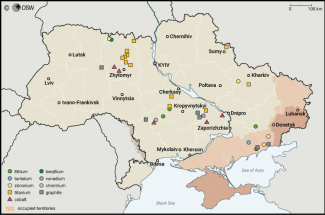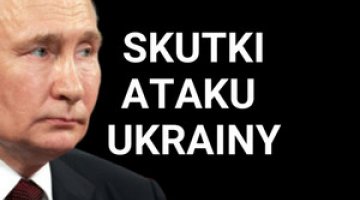The Ukraine–US agreement on minerals
On 30 April, Ukraine’s Deputy Prime Minister and Minister of the Economy Yulia Svyrydenko and US Secretary of the Treasury Scott Bessent signed an agreement to establish the US–Ukraine Reconstruction Investment Fund. This new institution is intended to attract capital for the long-term reconstruction and modernisation of Ukraine and will finance infrastructure, energy, and mineral extraction projects. On the US side, the fund will be operated by the International Development Finance Corporation (DFC), while the Ukrainian counterpart will be the Public-Private Partnership Agency (APPP). The two entities are also expected to sign a supplementary ‘limited partnership agreement’ detailing the fund’s governance and financing structure. The value of the US contribution to the fund will include an estimated valuation of future US military assistance to Ukraine, covering weapons and ammunition deliveries as well as training programmes. This likely implies that Kyiv will be required to contribute the equivalent value of that future US support. Ukraine’s contribution will include 50% of revenues from concession fees, licences, and production-sharing agreements from new (or previously inactive) extraction projects involving rare earth elements, strategic metals (such as uranium, titanium, and lithium), precious metals, as well as oil and natural gas – a total of 57 specified minerals and resources. Other minerals or hydrocarbons may also be included, pending mutual agreement. The agreement requires ratification by Ukraine’s Verkhovna Rada, which is expected to occur on 8 May.
The agreement is primarily of political significance, as it reflects Kyiv’s efforts to maintain US engagement in Ukraine – particularly as a supplier of military aid, including potentially on commercial terms (an option allowed under the signed document). Many of the agreement’s key provisions refer to the forthcoming ‘limited partnership agreement’, the content of which remains unknown. This lack of clarity makes it challenging to assess the long-term benefits and risks for Ukraine. It is also important to note that investments in new resource extraction projects in Ukraine will be a long-term process, likely unfolding over many years.
Commentary
- The signing of the agreement, after almost three months of negotiations, allows both parties to present it as a success. It also removes one of the most contentious issues from the bilateral agenda. Kyiv succeeded in avoiding acceptance of some of Washington’s most unfavourable proposals, particularly the designation of previous financial (grant-based) and military assistance as Ukraine’s debt. Another success for Ukraine involves the recognition of the value of any future US military aid as Washington’s contribution to the fund, as in many areas (especially air defence and intelligence) Kyiv has no viable alternative to US support. However, the agreement does not include any security guarantees for Ukraine – something President Volodymyr Zelensky had previously indicated would be a prerequisite for concluding such a deal (see ‘Trump–Zelensky: an escalation of rhetoric’).
- Without access to the content of the ‘limited partnership agreement’, which has yet to be formally concluded, it is not possible to reliably assess the signed document. In numerous sections – especially those concerning the fund’s financing model – the agreement refers directly to provisions of this forthcoming document. Statements by Ukrainian politicians suggest that the wording of the additional agreement has already been agreed upon; however, it remains unavailable to the public. A third document – the fund’s by-law – is also to be signed. Neither of these texts will require parliamentary ratification; they will be concluded at the level of the DFC and the APPP. This means that the Verkhovna Rada will be voting to ratify the agreement establishing the joint fund without knowing the key details governing its actual operation. The Ukrainian government’s decision not to disclose these documents may indicate that they contain provisions unfavourable to Kyiv.
- In the short term, the agreement will have limited economic impact. The vast majority of the resources covered by the deal are either not currently extracted in Ukraine or are produced in small amounts (see Appendix). Most of the country’s deposits are difficult to access and require the development of costly infrastructure, which could take many years. Moreover, many of the existing estimates regarding Ukraine’s resource reserves date back to the Soviet era and may no longer be accurate. Thus, new geological surveys will be necessary.
APPENDIX
Mineral resources in Ukraine
Within its internationally recognised borders, Ukraine has extensive deposits of natural resources. However, their exact value remains unknown, as information regarding the size of strategically important reserves is classified as a state secret and often based on outdated Soviet-era data. Estimates of their total value vary widely, ranging from $2 trillion to $26 trillion.
According to calculations by the Ukrainian edition of Forbes in 2023, the majority of the estimated resource value is attributed to hard coal (62%) and iron ore (12%), neither of which is covered by the signed agreement. Currently, rare earth metals (such as scandium, tantalum, and cerium) are not extracted on an industrial scale in Ukraine due to their limited reserves. However, the country does have minerals of critical economic importance, including lithium, uranium, and titanium.
Seventy percent of Ukraine’s mineral resources are located in three oblasts: Donetsk, Dnipropetrovsk, and Luhansk. Consequently, the majority of the country’s deposits are currently under Russian occupation, particularly substantial portions of its lithium, zirconium, graphite, gas, and coal reserves. Russia is profiting from the extraction of some of these resources.
Ukraine still controls deposits of certain resources that are potentially attractive for investment. However, in some instances, their extraction faces significant logistical and technical challenges:
- the exploitation of Ukraine’s high-quality beryllium deposits is environmentally harmful, and a portion of these reserves lies within the boundaries of a nature reserve. This is one of the reasons why beryllium is currently not being extracted, despite the issuance of the necessary permits;
- Ukraine holds 10% of the world’s kaolin reserves. In 2021, it extracted 1.6 million tonnes of the mineral, accounting for 3.6% of global production;
- Ukraine’s lithium reserves are estimated at 500,000 tonnes; however, extraction remains minimal. The deposits are difficult and costly to exploit due to the need to construct mining shafts. Moreover, Ukrainian lithium primarily comes in the form of petalite, which is not used in the production of car batteries;
- Ukraine holds the world’s largest manganese ore reserves (2.16 billion tonnes, accounting for 42% of global stocks). In 2021, it extracted 3.8 million tonnes of manganese ore;
- Ukraine has 12 nickel deposits, estimated at approximately 218,000 tonnes, though some are too small to be of economic significance. Consequently, only the larger deposits are currently being exploited. For similar reasons, cobalt is not being extracted;
- in 2019, a permit for tantalum extraction was granted; however, legal proceedings to revoke it are currently underway, and as a result, the metal is not being extracted;
- only 10% of Ukraine’s total titanium reserves are currently being extracted; exploiting the remainder would require significant investment due to the need for shaft mining. In 2021, Ukraine produced 525,000 tonnes of titanium, ranking sixth globally;
- uranium extraction in Ukraine is costly due to the depth of the deposits’ location and is therefore not widely pursued. Pre-war production did not cover even 50% of the country’s domestic demand. In 2022, Ukraine extracted 100 tonnes of uranium;
- in 2024, Ukraine extracted 19.12 bcm of natural gas, marking an increase of approximately 2% compared to 2023 (18.78 bcm). Current production levels are slightly below pre-war figures (19.8 bcm). Gas reserves in areas controlled by Kyiv are estimated at 680 bcm. However, in 2025, Russia conducted numerous attacks on gas extraction infrastructure, which may negatively affect production results this year;
- in 2023, crude oil production in Ukraine reached 2.1 million tonnes (figures for 2024 are not yet available), compared to 1.65 million tonnes in 2021, of which 68% was extracted in the eastern part of the country. However, during the war, new drilling operations were initiated, which helped to mitigate this issue. Overall, crude oil reserves in areas free from occupation are estimated at approximately 107 million tonnes.
Map. Natural resources in Ukraine

Source: ‘The Mineral Wars – How Ukraine’s Critical Minerals Will Fuel Future Geopolitical Rivalries’, CIRSD, cirsd.org.




